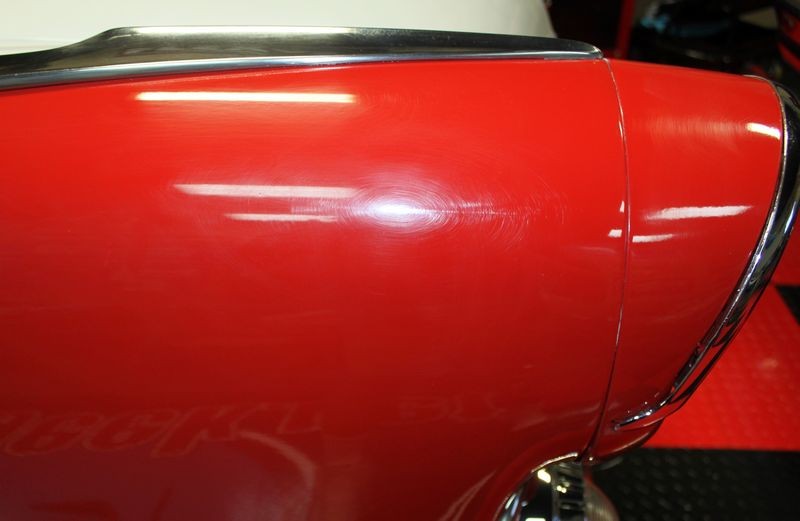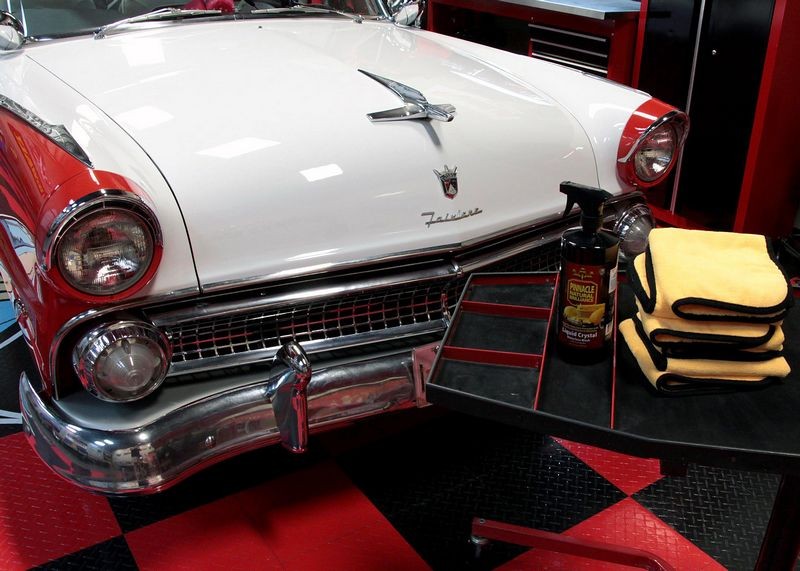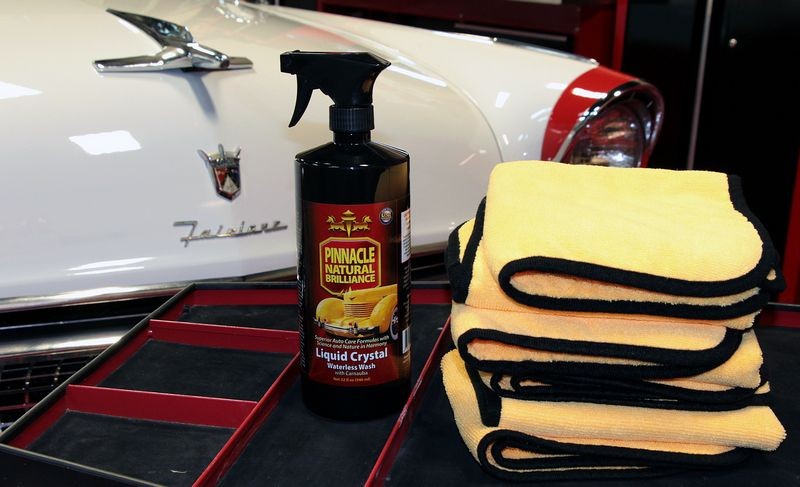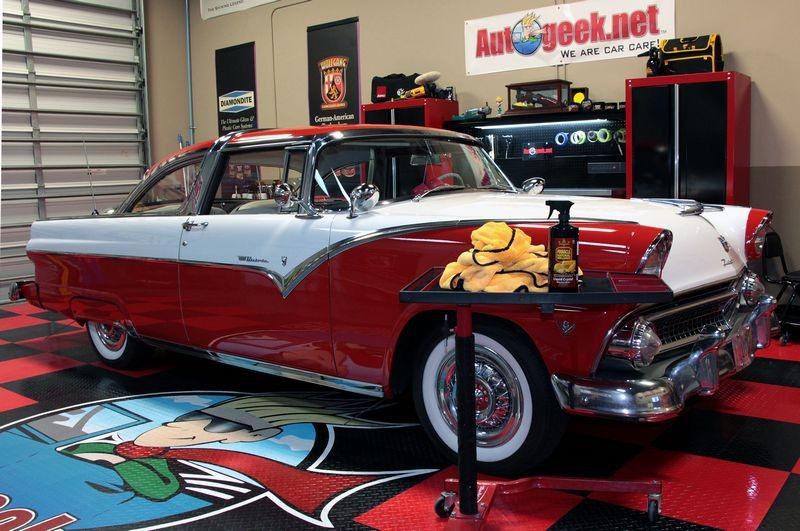Mike Phillips
Active member
- Dec 5, 2022
- 51,004
- 6
Waterless Car Wash - How to safely clean you car without a hose & bucket
Washing your car using a hose and bucket is the traditional way to remove the dirt and road grim to get your car clean and shiny. The ability to have running water flushing off loosened dirt along with the soap suds offers lots of lubricity to help prevent any of the dirt or other abrasive particles from potentially scratching the paint.
The problem is that use the traditional method of a water hose and bucket is not always an option for everyone with a dirty car. It's also not the best way to wash a classic car like in the pictures below.
Different types of waterless car washes
Some waterless car washes focus primarily on cleaning while some focus on cleaning while at the same time adding some gloss and protection.
If you're going to detail a car that has been neglected so the paint has swirls, scratches, water spots and oxidation, then a good choice for a car in this condition would be a cleaning only waterless car wash as there's no benefit to adding gloss and protection to a car you're getting ready to buff out.
If you've already detailed your car and the exterior in ins excellent condition with a fresh coat of wax, then using a waterless wash that adds gloss and a little protection is a good option as it will work better on paint in this condition.
The key to success
The key to using a waterless car wash successfully is to follow these three tips,
1. Use plenty of product - Plenty of product means lots of lubrication.
2. Use plenty of clean, microfiber towels - Plenty of towels means less chance of cross-contamination. That is by switching to a clean towel often you reduce the potential to rub dirt removed off one panel only to rub it over the next body panel.
3. Use good technique - Good technique is to fold your microfiber towel 4-ways to give you 8 clean sides to wipe with and after making one pass over a section of a panel with one side of the towel, turn to a clean side for the next pass. Continue doing this till you've used up all 8 sides and then switch to a clean fresh towel.
Cleaning classic cars using a waterless wash
As a practice, I never use a hose and bucket to wash a classic or antique car like this restored 1955 Ford Crown Victoria. The reason why is because you don't want to introduce water into places you cannot reach to dry where it can potentially cause rust. Rust is one of the worst types of destruction to classic and antique cars and removing rust can be quite costly. So a good best practice if you detail cars for money is to only use a waterless wash when cleaning restored antique and classic cars.
Using a Waterless Wash with Carnauba to clean a 1955 Ford Crown Victoria
(restored)
I detailed this car in February of 2013, when the car first arrived the paint was filled with swirls and scratches...
Rupes side by side detail - 1955 Crown Victoria

Swirls in the paint


It's been 10 months since I've seen this car and next month it's going up for sale at a classic car auction in Fort Lauderdale, Florida.
The owner asked me to spruce it up for the auction to help get the highest price possible. Since I had already buffed this car out and applied a coat of wax, except for being dusty and having some light road grime it was still in great shape.
This is a perfect candidate car for a waterless wash that adds gloss and protection.

Tip: Have plenty of clean, dry plus microfiber towels on hand...

Tip: Fold your microfiber towels 4-ways to give you 8 dedicated sides to wipe with...

Gather the leading edges of the folded microfiber towel and lightly lift them upward as you make a single pass over a section of paint.


Start at the top and work your way down and around the car saving the lowest panels of the car and fender lips for last

Lay down a heavy spray of waterless wash to provide plenty of cleaning agents plus lubrication...



Pinnacle Crystal Shine Waterless Wash can also be used on glass as well as chrome and stainless steel trim.







Save time...
In less time than it would take you to drag out the hose, buckets, wash mitts, drying chamois etc. you can get your car clean while leaving behind a Carnauba wax glossy protected finish.


On Autogeek.net
Pinnacle Liquid Crystal Waterless Wash with Carnauba 32 oz
Pinnacle Liquid Crystal Waterless Wash with Carnauba 64 oz
Pinnacle Liquid Crystal Waterless Wash with Carnauba 128 oz.
Gold Plush Jr. Microfiber Towels 3 Pack

Washing your car using a hose and bucket is the traditional way to remove the dirt and road grim to get your car clean and shiny. The ability to have running water flushing off loosened dirt along with the soap suds offers lots of lubricity to help prevent any of the dirt or other abrasive particles from potentially scratching the paint.
The problem is that use the traditional method of a water hose and bucket is not always an option for everyone with a dirty car. It's also not the best way to wash a classic car like in the pictures below.
Different types of waterless car washes
Some waterless car washes focus primarily on cleaning while some focus on cleaning while at the same time adding some gloss and protection.
If you're going to detail a car that has been neglected so the paint has swirls, scratches, water spots and oxidation, then a good choice for a car in this condition would be a cleaning only waterless car wash as there's no benefit to adding gloss and protection to a car you're getting ready to buff out.
If you've already detailed your car and the exterior in ins excellent condition with a fresh coat of wax, then using a waterless wash that adds gloss and a little protection is a good option as it will work better on paint in this condition.
The key to success
The key to using a waterless car wash successfully is to follow these three tips,
1. Use plenty of product - Plenty of product means lots of lubrication.
2. Use plenty of clean, microfiber towels - Plenty of towels means less chance of cross-contamination. That is by switching to a clean towel often you reduce the potential to rub dirt removed off one panel only to rub it over the next body panel.
3. Use good technique - Good technique is to fold your microfiber towel 4-ways to give you 8 clean sides to wipe with and after making one pass over a section of a panel with one side of the towel, turn to a clean side for the next pass. Continue doing this till you've used up all 8 sides and then switch to a clean fresh towel.
Cleaning classic cars using a waterless wash
As a practice, I never use a hose and bucket to wash a classic or antique car like this restored 1955 Ford Crown Victoria. The reason why is because you don't want to introduce water into places you cannot reach to dry where it can potentially cause rust. Rust is one of the worst types of destruction to classic and antique cars and removing rust can be quite costly. So a good best practice if you detail cars for money is to only use a waterless wash when cleaning restored antique and classic cars.
Using a Waterless Wash with Carnauba to clean a 1955 Ford Crown Victoria
(restored)
I detailed this car in February of 2013, when the car first arrived the paint was filled with swirls and scratches...
Rupes side by side detail - 1955 Crown Victoria

Swirls in the paint


It's been 10 months since I've seen this car and next month it's going up for sale at a classic car auction in Fort Lauderdale, Florida.
The owner asked me to spruce it up for the auction to help get the highest price possible. Since I had already buffed this car out and applied a coat of wax, except for being dusty and having some light road grime it was still in great shape.
This is a perfect candidate car for a waterless wash that adds gloss and protection.

Tip: Have plenty of clean, dry plus microfiber towels on hand...

Tip: Fold your microfiber towels 4-ways to give you 8 dedicated sides to wipe with...

Gather the leading edges of the folded microfiber towel and lightly lift them upward as you make a single pass over a section of paint.


Start at the top and work your way down and around the car saving the lowest panels of the car and fender lips for last

Lay down a heavy spray of waterless wash to provide plenty of cleaning agents plus lubrication...



Pinnacle Crystal Shine Waterless Wash can also be used on glass as well as chrome and stainless steel trim.







Save time...
In less time than it would take you to drag out the hose, buckets, wash mitts, drying chamois etc. you can get your car clean while leaving behind a Carnauba wax glossy protected finish.


On Autogeek.net
Pinnacle Liquid Crystal Waterless Wash with Carnauba 32 oz
Pinnacle Liquid Crystal Waterless Wash with Carnauba 64 oz
Pinnacle Liquid Crystal Waterless Wash with Carnauba 128 oz.
Gold Plush Jr. Microfiber Towels 3 Pack
